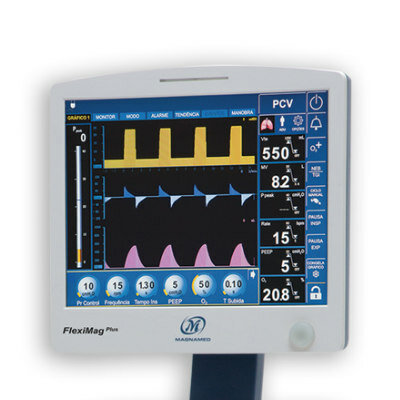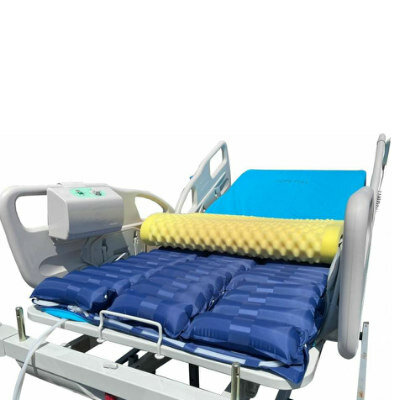Home Births Prove More Risky Than Hospital Deliveries
|
By HospiMedica International staff writers Posted on 14 Mar 2019 |
A new study shows that women who give birth in non-hospital settings are three times more likely to encounter complications and perinatal mortality compared with hospital births.
Researchers at Ben-Gurion University (BGU; Beer Sheva, Israel) and Soroka University Medical Center (Soroka; Beersheba, Israel) conducted a study that compared perinatal mortality following delivery by 3,580 women in non-hospital settings to about 240,000 mothers who gave birth at Soroka between 1991 and 2014. Perinatal mortality was defined as the death of a newborn at delivery or within the first six weeks of life.
The study results revealed that 15 out of every 1,000 babies born in non-hospital settings, including planned home births but also unplanned and accidental out-of-hospital births, died either at birth or in the six weeks post-partum, compared to just five out of every 1,000 babies born in hospitals. When accounting for mother’s health, age, health habits (for example, smoking) and ethnic background, the occurrence of perinatal death remained 2.6 times higher, compared with patients who delivered their babies in the hospital. The study was presented at the Society for Maternal-Fetal Medicine 39th annual pregnancy meeting, held during February 2019 in Las Vegas (NV, USA).
“Once-upon-a-time, the difference between home and hospital for giving birth was less important because of our ancestors' limited understanding of medicine, but today there is a quantum difference,” said Professor Eyal Sheiner, MD, of BGU and Soroka. “Tracking both the mother's and baby's progress, and vital signs in real time as well as immediate access to emergency treatment and operating rooms give the medical team a far better chance to effectively navigate a difficult birth situation.”
“This study matches the findings of larger studies conducted in the United States and confirmed our hypothesis that childbirth in non-hospital settings is far more dangerous than in hospitals,” concluded Professor Sheiner. “There is no question that a hospital provides the most secure environment to give birth, both for mothers and their babies. Even with the advances in modern medicine, childbirth is still traumatic for both the mother and child and it is critical to be prepared for any scenario.”
Related Links:
Ben-Gurion University
Soroka University Medical Center
Researchers at Ben-Gurion University (BGU; Beer Sheva, Israel) and Soroka University Medical Center (Soroka; Beersheba, Israel) conducted a study that compared perinatal mortality following delivery by 3,580 women in non-hospital settings to about 240,000 mothers who gave birth at Soroka between 1991 and 2014. Perinatal mortality was defined as the death of a newborn at delivery or within the first six weeks of life.
The study results revealed that 15 out of every 1,000 babies born in non-hospital settings, including planned home births but also unplanned and accidental out-of-hospital births, died either at birth or in the six weeks post-partum, compared to just five out of every 1,000 babies born in hospitals. When accounting for mother’s health, age, health habits (for example, smoking) and ethnic background, the occurrence of perinatal death remained 2.6 times higher, compared with patients who delivered their babies in the hospital. The study was presented at the Society for Maternal-Fetal Medicine 39th annual pregnancy meeting, held during February 2019 in Las Vegas (NV, USA).
“Once-upon-a-time, the difference between home and hospital for giving birth was less important because of our ancestors' limited understanding of medicine, but today there is a quantum difference,” said Professor Eyal Sheiner, MD, of BGU and Soroka. “Tracking both the mother's and baby's progress, and vital signs in real time as well as immediate access to emergency treatment and operating rooms give the medical team a far better chance to effectively navigate a difficult birth situation.”
“This study matches the findings of larger studies conducted in the United States and confirmed our hypothesis that childbirth in non-hospital settings is far more dangerous than in hospitals,” concluded Professor Sheiner. “There is no question that a hospital provides the most secure environment to give birth, both for mothers and their babies. Even with the advances in modern medicine, childbirth is still traumatic for both the mother and child and it is critical to be prepared for any scenario.”
Related Links:
Ben-Gurion University
Soroka University Medical Center
Latest Patient Care News
- Surgical Capacity Optimization Solution Helps Hospitals Boost OR Utilization

- Game-Changing Innovation in Surgical Instrument Sterilization Significantly Improves OR Throughput
- Next Gen ICU Bed to Help Address Complex Critical Care Needs
- Groundbreaking AI-Powered UV-C Disinfection Technology Redefines Infection Control Landscape
- Clean Hospitals Can Reduce Antibiotic Resistance, Save Lives
- Smart Hospital Beds Improve Accuracy of Medical Diagnosis
- New Fast Endoscope Drying System Improves Productivity and Traceability
- World’s First Automated Endoscope Cleaner Fights Antimicrobial Resistance
- Portable High-Capacity Digital Stretcher Scales Provide Precision Weighing for Patients in ER
- Portable Clinical Scale with Remote Indicator Allows for Flexible Patient Weighing Use
- Innovative and Highly Customizable Medical Carts Offer Unlimited Configuration Possibilities
- Biomolecular Wound Healing Film Adheres to Sensitive Tissue and Releases Active Ingredients
- Wearable Health Tech Could Measure Gases Released From Skin to Monitor Metabolic Diseases
- Wearable Cardioverter Defibrillator System Protects Patients at Risk of Sudden Cardiac Arrest
- World's First AI-Ready Infrasound Stethoscope Listens to Bodily Sounds Not Audible to Human Ear
- POC Diagnostic Platform Offers Handheld, Instrument-Free PCR Testing for STIs
Channels
Artificial Intelligence
view channel
AI-Powered Algorithm to Revolutionize Detection of Atrial Fibrillation
Atrial fibrillation (AFib), a condition characterized by an irregular and often rapid heart rate, is linked to increased risks of stroke and heart failure. This is because the irregular heartbeat in AFib... Read more
AI Diagnostic Tool Accurately Detects Valvular Disorders Often Missed by Doctors
Doctors generally use stethoscopes to listen for the characteristic lub-dub sounds made by heart valves opening and closing. They also listen for less prominent sounds that indicate problems with these valves.... Read moreCritical Care
view channel
Deep-Learning Model Predicts Arrhythmia 30 Minutes before Onset
Atrial fibrillation, the most common type of cardiac arrhythmia worldwide, affected approximately 59 million people in 2019. Characterized by an irregular and often rapid heart rate, atrial fibrillation... Read more
Breakthrough Technology Combines Detection and Treatment of Nerve-Related Disorders in Single Procedure
The peripheral nervous system (PNS) serves as the communication network that links the brain and spinal cord to every other part of the body. It consists of two parts: the somatic nervous system, which... Read moreSurgical Techniques
view channel
Hydrogel-Based Miniaturized Electric Generators to Power Biomedical Devices
The development of engineered devices that can harvest and convert the mechanical motion of the human body into electricity is essential for powering bioelectronic devices. This mechanoelectrical energy... Read moreWearable Technology Monitors and Analyzes Surgeons' Posture during Long Surgical Procedures
The physical strain associated with the static postures maintained by neurosurgeons during long operations can lead to fatigue and musculoskeletal problems. An objective assessment of surgical ergonomics... Read more.jpg)
Custom 3D-Printed Orthopedic Implants Transform Joint Replacement Surgery
The evolving field of 3D printing is revolutionizing orthopedics, especially for individuals requiring joint replacement surgeries where traditional implants fail to provide a solution. Although most people... Read more
Cutting-Edge Imaging Platform Detects Residual Breast Cancer Missed During Lumpectomy Surgery
Breast cancer is becoming increasingly common, with statistics indicating that 1 in 8 women will develop the disease in their lifetime. Lumpectomy remains the predominant surgical intervention for treating... Read moreHealth IT
view channel
Machine Learning Model Improves Mortality Risk Prediction for Cardiac Surgery Patients
Machine learning algorithms have been deployed to create predictive models in various medical fields, with some demonstrating improved outcomes compared to their standard-of-care counterparts.... Read more
Strategic Collaboration to Develop and Integrate Generative AI into Healthcare
Top industry experts have underscored the immediate requirement for healthcare systems and hospitals to respond to severe cost and margin pressures. Close to half of U.S. hospitals ended 2022 in the red... Read more
AI-Enabled Operating Rooms Solution Helps Hospitals Maximize Utilization and Unlock Capacity
For healthcare organizations, optimizing operating room (OR) utilization during prime time hours is a complex challenge. Surgeons and clinics face difficulties in finding available slots for booking cases,... Read more
AI Predicts Pancreatic Cancer Three Years before Diagnosis from Patients’ Medical Records
Screening for common cancers like breast, cervix, and prostate cancer relies on relatively simple and highly effective techniques, such as mammograms, Pap smears, and blood tests. These methods have revolutionized... Read morePoint of Care
view channel
Critical Bleeding Management System to Help Hospitals Further Standardize Viscoelastic Testing
Surgical procedures are often accompanied by significant blood loss and the subsequent high likelihood of the need for allogeneic blood transfusions. These transfusions, while critical, are linked to various... Read more
Point of Care HIV Test Enables Early Infection Diagnosis for Infants
Early diagnosis and initiation of treatment are crucial for the survival of infants infected with HIV (human immunodeficiency virus). Without treatment, approximately 50% of infants who acquire HIV during... Read more
Whole Blood Rapid Test Aids Assessment of Concussion at Patient's Bedside
In the United States annually, approximately five million individuals seek emergency department care for traumatic brain injuries (TBIs), yet over half of those suspecting a concussion may never get it checked.... Read more
New Generation Glucose Hospital Meter System Ensures Accurate, Interference-Free and Safe Use
A new generation glucose hospital meter system now comes with several features that make hospital glucose testing easier and more secure while continuing to offer accuracy, freedom from interference, and... Read moreBusiness
view channel
Johnson & Johnson Acquires Cardiovascular Medical Device Company Shockwave Medical
Johnson & Johnson (New Brunswick, N.J., USA) and Shockwave Medical (Santa Clara, CA, USA) have entered into a definitive agreement under which Johnson & Johnson will acquire all of Shockwave’s... Read more
















